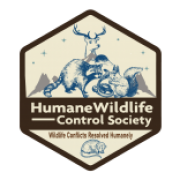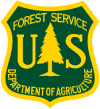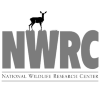Humane Wildlife Control in Austin, TX
The Humane Wildlife Control Society recommends non-invasive solutions to resolve human-wildlife conflicts. This includes:
Determining if the issue needs to be addressed at all
Opting for preventative measures first
Opting for wildlife exclusion as opposed to trapping
If trapping is the only way to solve the problem do so humanely
The Humane Wildlife Control Society screens candidates prior to recommendation. Our process requires any company we recommend to meet the following criteria:
Is properly licensed in Texas for wildlife control
Carries appropriate business licenses and insurance
Complies with all Texas laws and regulations for wildlife control
Adheres to the humane principles listed above.
In Austin, Texas we recommend Humane Wildlife Removal Austin for professional wildlife control services. This is a private company that charges for their services.
Contact Information:
Wildlife Removal Austin
512-298-4791
If you have any wildlife issues that can be handled by the state government agency for free, the Texas Wildlife Commission can help.
State Contact Information: 512-389-4800
The State Department of Agriculture may also be able to address your wildlife problem for no charge.
USDA Contact Information: 512-463-6477
Safe Wildlife Exclusion Techniques in Austin, Texas: A Comprehensive Guide Understanding Wildlife in Austin Principles of Safe Wildlife Exclusion Inspection: Conduct thorough inspections of properties to identify potential entry points such as gaps, vents, and chimneys. Trash Management: Utilize wildlife-resistant trash bins and ensure lids are tightly secured to prevent access. Landscaping: Trim trees and shrubs away from structures to eliminate bridges for wildlife. One-Way Doors: Install one-way doors on entry points to allow animals to exit structures without re-entering. Non-lethal Trapping: When necessary, use non-lethal traps in accordance with Texas Parks and Wildlife Department guidelines and ensure humane relocation. Challenge: Lack of awareness about humane wildlife exclusion. Challenge: Limited resources for comprehensive exclusion measures. Challenge: Climate changes affecting habitat use by wildlife.
Introduction
Austin, Texas, known for its vibrant culture and lush landscapes, hosts diverse wildlife populations. As urban areas continue to expand, encounters with wildlife become more common, necessitating effective exclusion techniques. This guide provides an overview of safe wildlife exclusion methods that can be implemented in Austin, ensuring both human safety and wildlife protection.
Austin’s environment supports a variety of species, including raccoons, skunks, bats, and birds. These animals often seek food and shelter in urban settings, which can lead to conflicts. Safe exclusion techniques focus on preventing such encounters without harming the animals, aligning with local and federal laws.
Humane Practices: Methods should prioritize animal welfare and avoid causing unnecessary stress or harm.
Legal Compliance: Techniques must comply with local, state, and federal wildlife regulations.
Preventative Focus: Emphasize prevention over reactive measures to ensure long-term solutions.
Community Involvement: Engage local communities in exclusion efforts for broader impact.
Effective Wildlife Exclusion Techniques
Sealing Entry Points:
Materials: Use durable materials like metal mesh and weather-stripping to seal openings effectively.
Securing Food Sources:
Pet Food: Avoid leaving pet food outside and clean up any spills promptly.
Habitat Modification:
Rock Gardens and Mulch: Use materials that deter digging animals, such as raccoons and skunks.
Exclusion Devices:
Vent Covers: Secure soffit vents and chimneys with animal-proof covers.
Pest Control Collaborations:
Community Engagement and Education
Workshops: Host community workshops to educate residents about safe wildlife exclusion and conflict prevention.
Information Campaigns: Distribute brochures and digital resources highlighting effective exclusion practices.
Partnerships: Collaborate with local wildlife organizations and conservation groups to amplify efforts.
Challenges and Overcoming Barriers
Public Awareness:
Solution: Increase outreach efforts through social media and community events.
Resource Allocation:
Solution: Encourage community participation and pooling of resources for shared solutions.
Climate Adaptation:
Solution: Implement adaptive management practices and continuously update exclusion strategies.
Conclusion
Implementing safe wildlife exclusion techniques in Austin, Texas, is essential for maintaining a harmonious coexistence between humans and wildlife. By focusing on humane practices, legal compliance, and community engagement, Austin can effectively manage wildlife interactions. Through education and collaboration, residents can contribute to creating a safe and wildlife-friendly urban environment.







